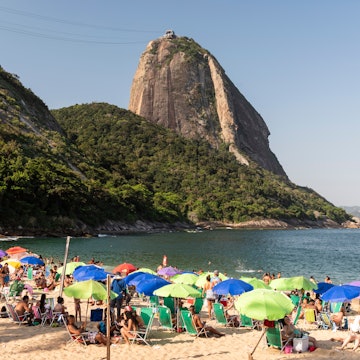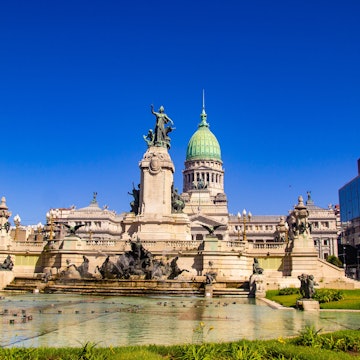
The best time to visit Buenos Aires


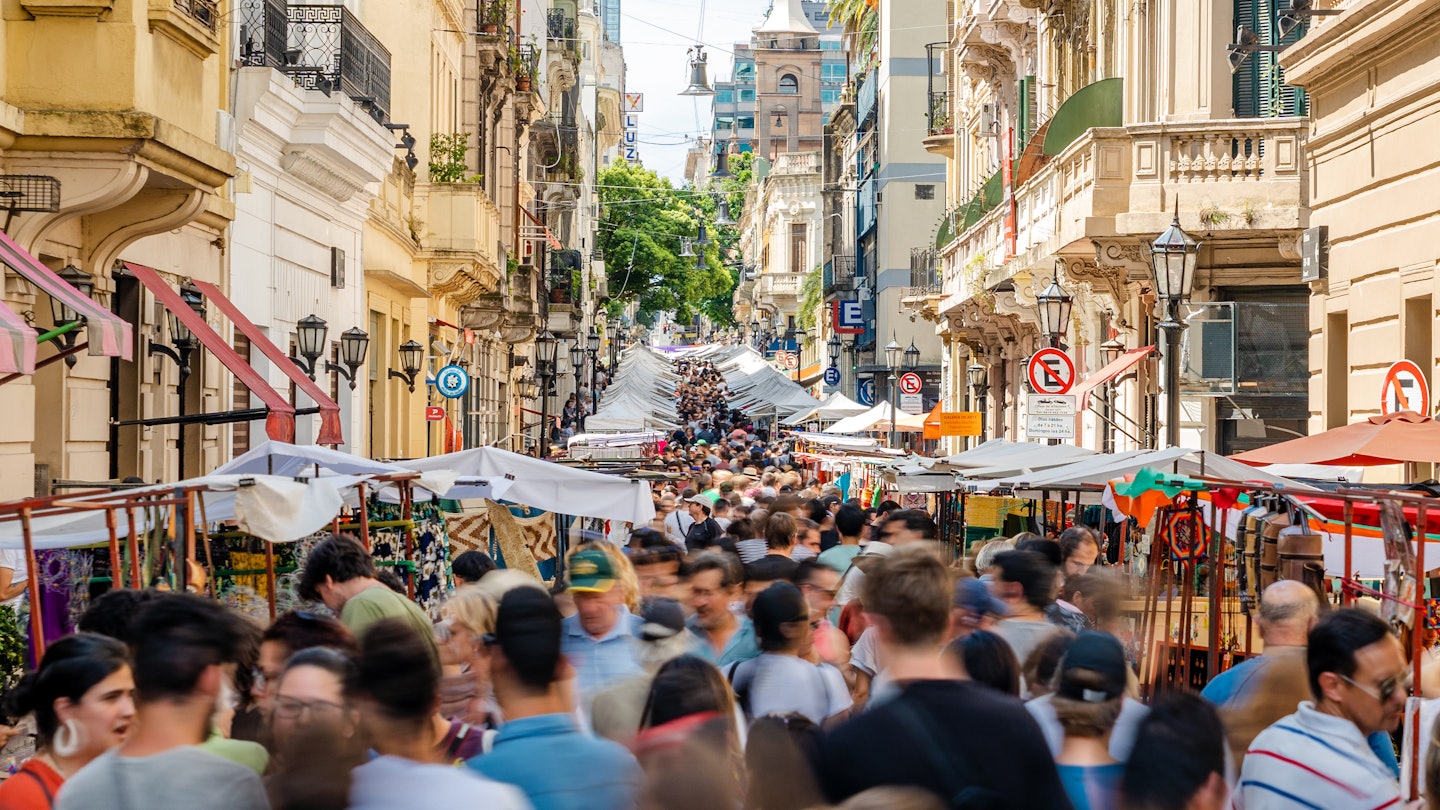
San Telmo Market. R.M. Nunes/Shutterstock
The magic of Buenos Aires lasts all year long. This vibrant, multicultural city tangoes, wines and dines throughout the seasons. (Remember that the northern hemisphere seasons are reversed in Argentina, so it's warm from December to March and cool from June to September.)
When is the perfect time to visit Buenos Aires? That depends on if you prefer sticky summer heat, cooler winter temperatures or the pleasant in-between days of fall and spring.
A packed calendar of events brings a different festival to the city almost every month, from tango competitions and rock concerts to spirited celebrations of gaucho (cowboy) culture.
The city can get extra busy around Christmas and New Year, coinciding with school holidays and the warmest summer weather.
Get a feel for the changing seasons by listening to Ástor Piazzolla’s Estaciones Porteñas, a series of tangos that celebrate summer, fall, winter and spring – then read our tips on the top times to come to Buenos Aires.
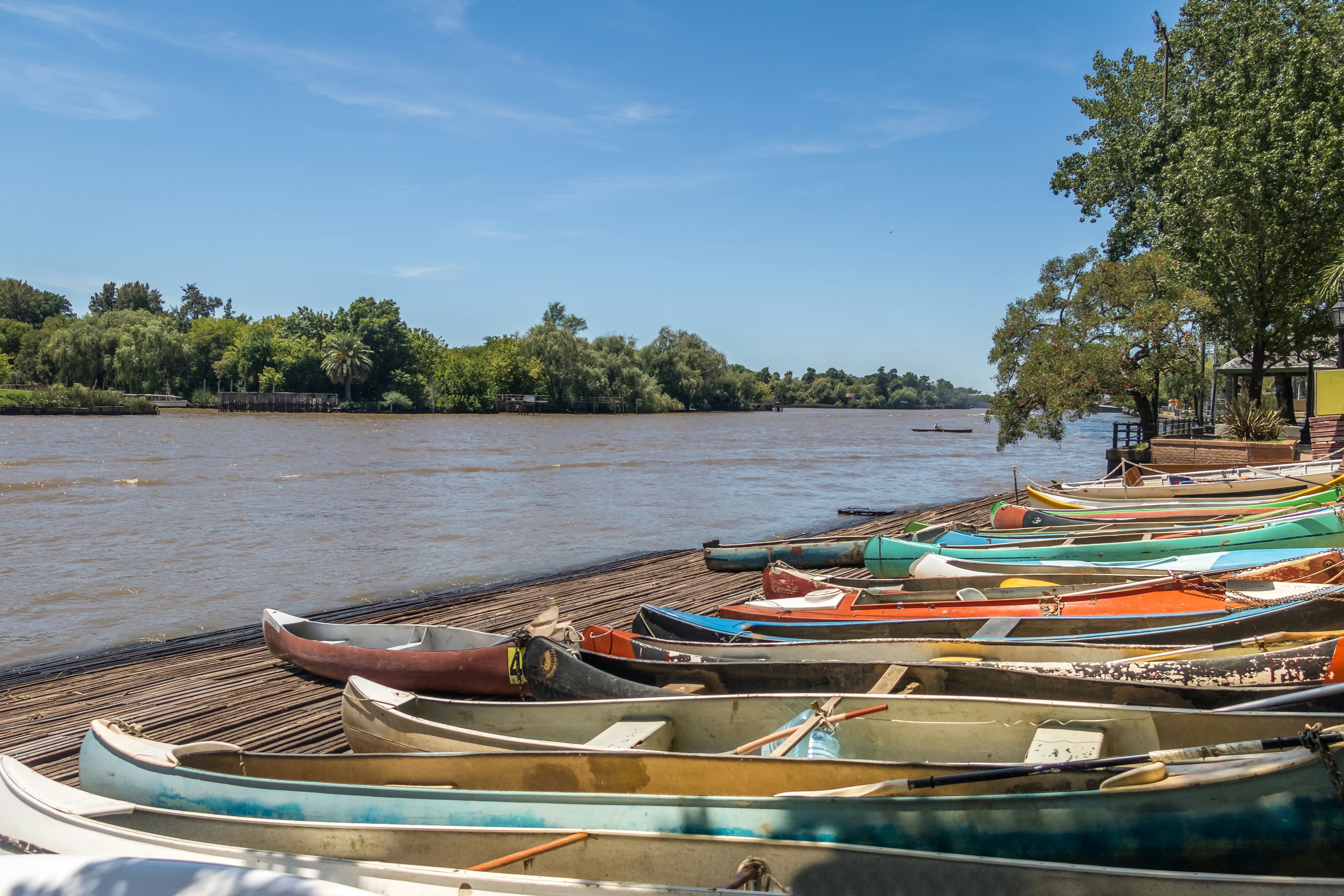
December to February is the best time for sunseekers
Weather in Buenos Aires in summer: The southern hemisphere summer in Buenos Aires is hot and sultry, with average daytime high temperatures reaching 30°C (86°F), and the humidity makes it feel even hotter. Long hot spells are often broken by dramatic thunderstorms and several days of rain.
This is the high season for tourism, particularly over Christmas and New Year. Most schools and universities are closed in January, leading to a surge in domestic tourism.
But as locals exit, tourists rush in, so book flights and accommodations well in advance – hotels are busy with high prices to match. If your budget permits, consider booking a hotel with a pool where you can cool off after a day of sightseeing in the sticky summer heat.
For porteños (Buenos Aires residents), summer means ice cream, cold beers and asados (barbecues) – the smell of grilling meat floating on the breeze.
Languid summer days are also a good excuse for a day trip to Tigre, a lush delta just 40 minutes away from the central city, where you sail or kayak in the channels.
In February, the city welcomes the Argentina Open and some of the best tennis players in the world as it gears up for Carnaval Porteño.
Parades take place every weekend, building to the official holiday, which falls toward the end of the month, and colorful troupes take to the streets to perform murga, a style of percussion-heavy music and dancing. Pay attention or you may face an unexpected soaking from kids with water bombs and foam sprays.

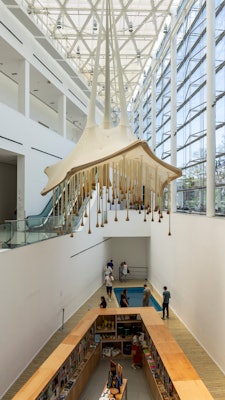
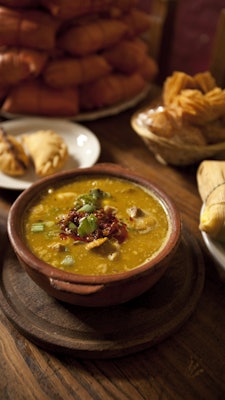
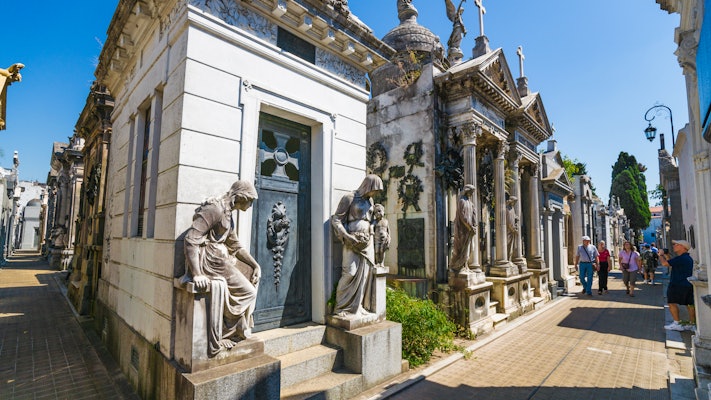
March to May is a great time for sightseeing
Weather in Buenos Aires in fall: March to May is a very pleasant time to visit Buenos Aires. The fall weather is generally mild, with average temperatures around 22°C (72°F), and hotel occupancy is usually at its lowest between April and June, making this a good time to find discounted rates too.
Expect a mix of sunshine and rainy days that provide a convenient excuse to duck into Buenos Aires’ magnificent old-school bars, cafes and coffee shops. (Alongside a coffee, we recommend getting a traditional medialuna, which is like a croissant but sweeter and with a softer dough, at Atelier Fuerza.)
The moderate temperatures are ideal for enjoying the city's top experiences without the summertime crowds.
Check out the revamped docks and wetland nature trails at Puerto Madero; marvel at the creativity on display in the Museo Nacional Bellas Artes or Museo de Arte Latinoamericano de Buenos Aires (MALBA); or admire the grand tombs of Argentina’s most prominent families at the Cementerio de la Recoleta.
Less than a block away, you can find Centro Cultural Recoleta, a community art center featuring works from emerging artists.
From late February into March, the city expresses its creativity during the biannual Festival Internacional de Buenos Aires (FIBA), which fills stages and public spaces with theater, dance, music and visual arts.
Big bands also hit the stage in March for Argentina's Lollapalooza – we recommend purchasing tickets in advance, as the music festival often sells out.
Every April, Buenos Aires Festival Internacional de Cine Independiente (BAFICI) takes over several movie theaters throughout the city, attracting a wide range of enthusiastic moviegoers with its affordable ticket prices.
Discover unique films from around the world, along with short films and retrospective screenings of works from renowned directors.
On May 25, porteños gather to celebrate the anniversary of the revolution with steaming bowls of locro (a corn-based stew). Or you can always pick up empanadas – don’t miss La Morada, a beloved spot near Plaza de Mayo that serves both dishes.
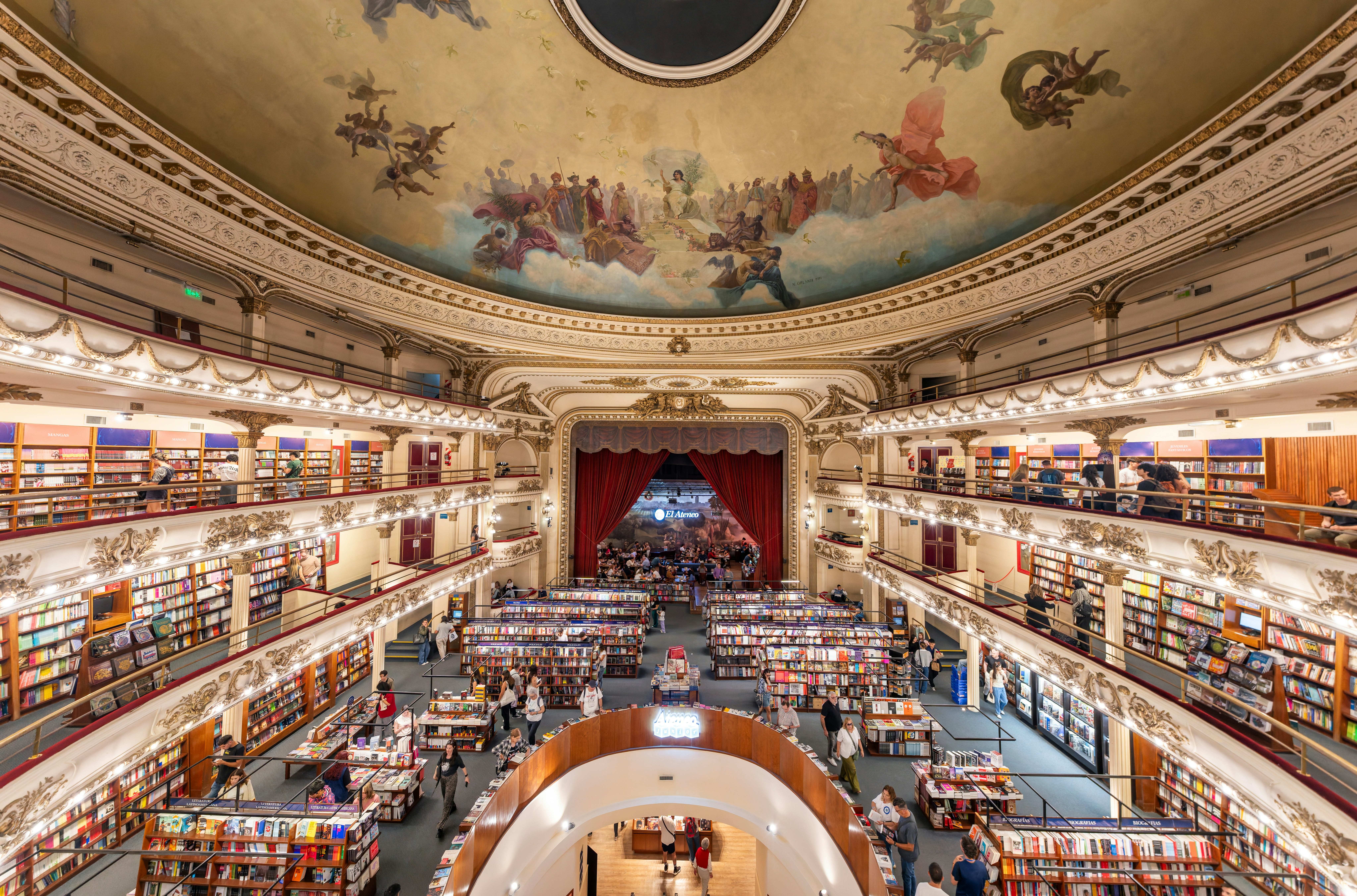
June to August is the best time for dancing and discounts
Weather in Buenos Aires in winter: While snowfall in Buenos Aires is rare, occurring only once every 100 years, you can expect temperatures to range between 7°C and 16°C (45°F to 61°F).
Although rain is possible year-round, the weather in winter is often dry, and the sunny winter days are perfect for exploring some of the city’s most awe-inspiring buildings without too much company, like El Ateneo Grand Splendid, a bookstore in a restored early 20th-century theater or Teatro Colón, Argentina’s premier opera house.
The countryside comes to the heart of the city in July during the Exposición Rural, a 10-day agriculture and livestock show held in the upscale district of Palermo.
One of the more popular events is gaucho horseback riding. There are also public displays of national pride on Día de la Independencia (Independence Day) on July 9.
Several big events take place in August, including the ArteBA arts festival and the tango World Cup. Couples compete in improvised salon dancing and choreographed stage dances.
Visitors can also enjoy high-octane performances by tango orchestras, take classes and visit milongas (dance halls).
Winter is the offseason, and it often attracts budget-conscious travelers who are not deterred by the colder temperatures.
With the slump in visitor numbers, it's easy to find cheaper flights and rooms, though there’s a small uptick in July and August, during the northern hemisphere summer break.
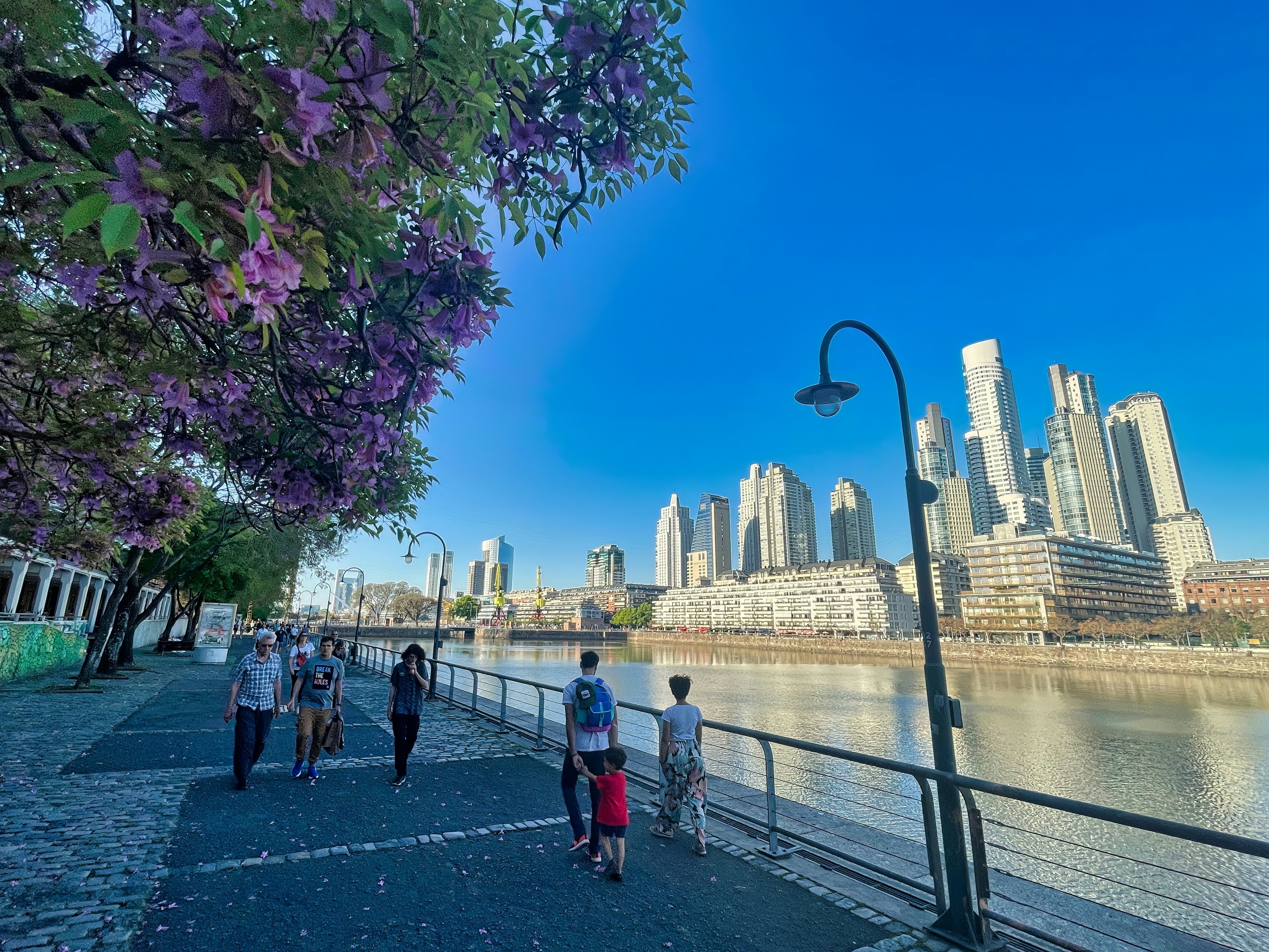
September to December is the perfect time for strolls and blooms
Weather in Buenos Aires in spring: Spring brings longer days and temperatures that range from 14°C to 24°C (57°F to 75°F).
All you need is a shirt and perhaps a light jacket to comfortably explore the city's large parks, where porteños gather to drink mate (a tea-like beverage).
During October and November, don't miss a visit to Parque 3 de Febrero, where a rose garden features over 8000 roses in 93 species.
Spring also sees more big events. Culture vultures set their sights on the jazz festival and the Noche de los Museos (Night of the Museums), when museums across the city open their doors for late-night events (dates can vary).
In October, the city hosts the world’s elite distance runners for the Buenos Aires marathon, and the streets come alive for Semana del Orgullo BA (LGBTQIA+ Pride Week) at the end of the month.
November is one of porteños favorite months because blooming jacaranda trees line the streets, raining thousands of lilac-colored flowers. Take a stroll on Avenida del Libertador and enjoy a glass of Argentine wine on the terrace of La Biela, situated under an impressive rubber tree that dates back to 1781.













